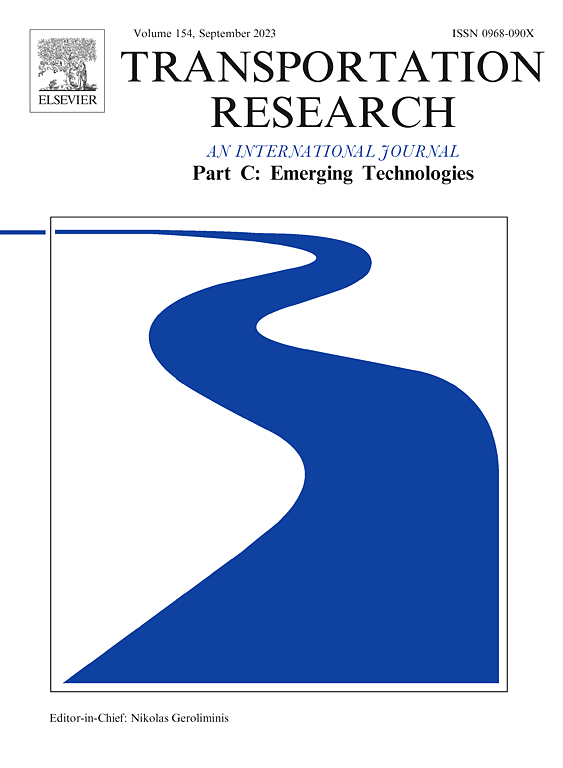Integrated train rescheduling and speed management in a railway network: A meso-micro approach based on direct multiple shooting and alternating direction method of multipliers
IF 7.6
1区 工程技术
Q1 TRANSPORTATION SCIENCE & TECHNOLOGY
Transportation Research Part C-Emerging Technologies
Pub Date : 2025-03-21
DOI:10.1016/j.trc.2025.105076
引用次数: 0
Abstract
The performance of high-speed railway systems is often affected by unavoidable disruptions, which impact the reliability of train operations and passenger satisfaction. In contrast to most existing studies, which focus on either train rescheduling or speed management in separate or sequential frameworks, this paper addresses the integrated train rescheduling and speed management problem during severe disruptions, considering power supply constraints on a bidirectional railway network. Specifically, this problem incorporates detailed train speed control into the rescheduling process and involves train rerouting strategies and flexible stops to mitigate disruption effects. To characterize the integrated problem, we develop a three-dimensional space–time-state network, where each arc corresponds to a detailed driving strategy. We then propose a mixed-integer nonlinear programming (MINLP) model to simultaneously optimize the train schedule (i.e., train order, departure and arrival times, and routes) and train speed profiles, with the goal of reducing both total passenger delays and train energy consumption. To efficiently solve the integrated model, we propose a two-stage approach based on the direct multiple shooting method and the alternating direction method of multipliers (ADMM). This approach is implemented by combining offline and online computing to meet real-time requirements. The effectiveness and efficiency of the proposed model and algorithm are verified through numerous experiments using real-world data from Chinese high-speed railways. Experimental results demonstrate that our integrated approach improves energy efficiency by an average of 19.40% in complete section blockage scenarios and 7.69% in temporary speed restriction scenarios, compared to methods that do not incorporate speed management.
求助全文
约1分钟内获得全文
求助全文
来源期刊
CiteScore
15.80
自引率
12.00%
发文量
332
审稿时长
64 days
期刊介绍:
Transportation Research: Part C (TR_C) is dedicated to showcasing high-quality, scholarly research that delves into the development, applications, and implications of transportation systems and emerging technologies. Our focus lies not solely on individual technologies, but rather on their broader implications for the planning, design, operation, control, maintenance, and rehabilitation of transportation systems, services, and components. In essence, the intellectual core of the journal revolves around the transportation aspect rather than the technology itself. We actively encourage the integration of quantitative methods from diverse fields such as operations research, control systems, complex networks, computer science, and artificial intelligence. Join us in exploring the intersection of transportation systems and emerging technologies to drive innovation and progress in the field.

 求助内容:
求助内容: 应助结果提醒方式:
应助结果提醒方式:


